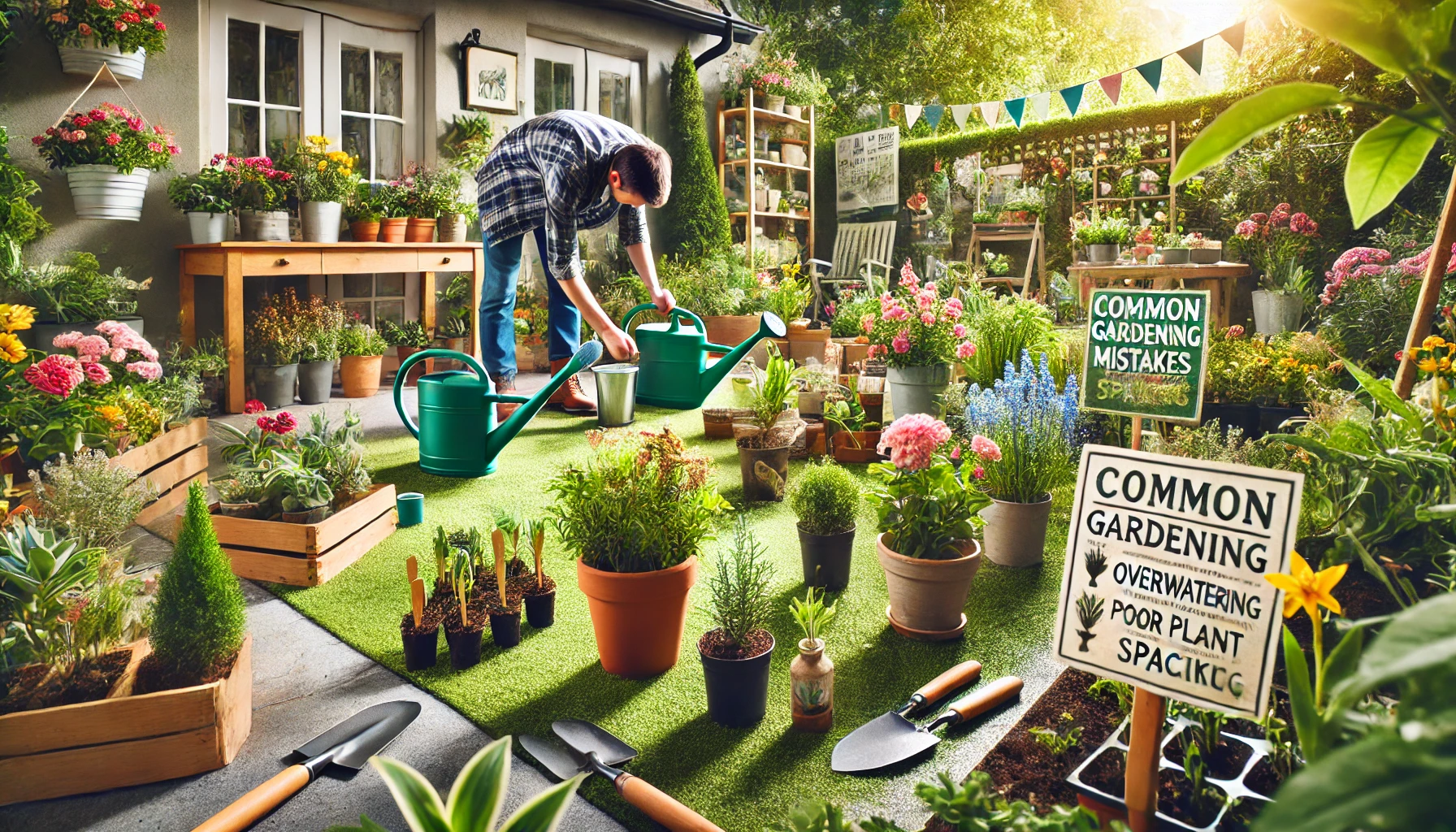Creating a beautiful and healthy garden seems simple, but many beginners make mistakes that can hinder plant growth and make maintenance difficult. Choosing the wrong plants, watering incorrectly, or not preparing the soil properly are just some of the most common slip-ups.
If you want to avoid frustrations and ensure that your garden grows strong and vibrant, check out the main mistakes made when starting a garden and how to avoid them.
1. Choosing Plants Incompatible with the Climate
The mistake:
Many people buy plants just for their appearance without considering if they are actually adaptable to the local climate. This results in plants requiring excessive care or, worse, not surviving.
How to avoid it:
✔ Before buying, research the plants’ needs regarding temperature, humidity, and sun exposure.
✔ Opt for native plants in your region, as they are already adapted to the local climate.
✔ If you want a more sensitive species, see if it’s possible to grow it in pots indoors.
✅ Tip: Those living in hot, dry areas can go for succulents and cacti, while cooler regions are ideal for hydrangeas and azaleas.
2. Not Preparing the Soil Before Planting
The mistake:
Planting flowers or vegetables without checking the quality of the soil can lead to weak, sickly plants with slow growth.
How to avoid it:
✔ Before planting, loosen the soil with a hoe or spade to make it airy and well-drained.
✔ Do a pH test to check if the soil is acidic or alkaline and adjust accordingly.
✔ Add organic compost, worm humus, or manure to enrich the soil with nutrients.
✅ Tip: If the soil is too compact and hard, consider creating raised beds with prepared soil to ensure healthy growth.
3. Overwatering or Underwatering
The mistake:
Both overwatering and underwatering can harm your plants. Overwatering causes root rot and fungal growth, while underwatering leads to dried out leaves and stunted growth.
How to avoid it:
✔ Water in the morning or late afternoon, avoiding the hottest hours of the day.
✔ Before watering, check if the soil is dry by inserting your finger into the soil.
✔ To avoid overwatering, invest in a drip irrigation system or use a watering can with a fine spout for better control.
✅ Tip: Plants like succulents, cacti, and rosemary need little water, while ferns and vegetable gardens require more frequent watering.
4. Planting Trees or Shrubs Too Close to the House
The mistake:
Planting large trees or shrubs too close to walls and buildings can cause problems in the future, like roots cracking sidewalks or branches touching the roof.
How to avoid it:
✔ Research the mature size of the plant before choosing the planting location.
✔ Opt for small trees in smaller spaces.
✔ Plant large trees at least 3 meters away from structures.
✅ Tip: For smaller gardens, choose dwarf fruit trees or trees like jabuticaba and pitanga, which grow well in pots.
5. Not Pruning Correctly
The mistake:
Pruning is essential for keeping the garden healthy, but pruning incorrectly or at the wrong time can harm plant growth.
How to avoid it:
✔ Identify the right time to prune for each species. Fruit trees, for example, should be pruned in winter.
✔ Use sharp, clean pruning shears to avoid injuring the plants.
✔ Avoid drastic pruning—always remove only dead or diseased branches.
✅ Tip: For shrubs and hedges, regular pruning stimulates new shoots and keeps them well-shaped.
6. Not Considering the Lighting in the Garden
The mistake:
Many people plant flowers and vegetables in the wrong spots without considering whether they need full sun or shade. This can prevent plants from thriving.
How to avoid it:
✔ Observe your garden throughout the day and identify the sunniest and shadiest areas.
✔ Plants that need full sun (6 hours of direct sunlight) include tomatoes, lavender, and succulents.
✔ Plants that prefer partial shade (3-4 hours of sun) include mint, anthuriums, and ferns.
✅ Tip: If your garden gets little sun, choose shade plants like peace lilies and pothos.
7. Overcrowding with Too Many Plants
The mistake:
Many people buy multiple plants without planning, leading to a disorganized and overcrowded garden.
How to avoid it:
✔ Start with a few plants and gradually add more.
✔ Leave space between plants so they can grow without competing.
✔ Choose plants of different heights and textures to create harmony in the garden design.
✅ Tip: Avoid mixing too many colors and species. Choose a color palette to keep a balanced look.
Conclusion: Planning is Key to a Perfect Garden
Building a garden can be a rewarding and enjoyable project, but avoiding these common mistakes makes all the difference in the final result. Choose the right plants, take care of the soil, water properly, and plan the space well to ensure a beautiful and healthy garden.
🌿 Now it’s your turn! With these tips, you can create a well-planned garden full of life, without the headaches in the future. ✨

